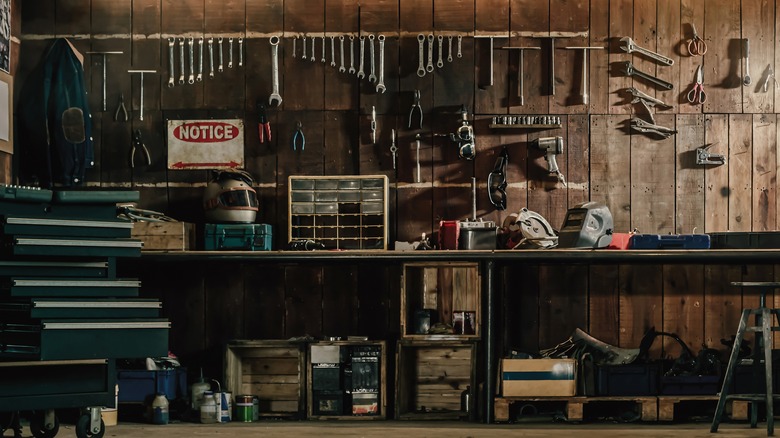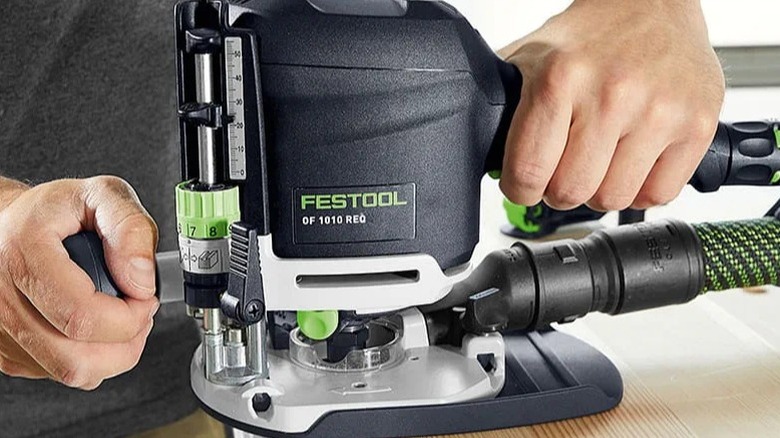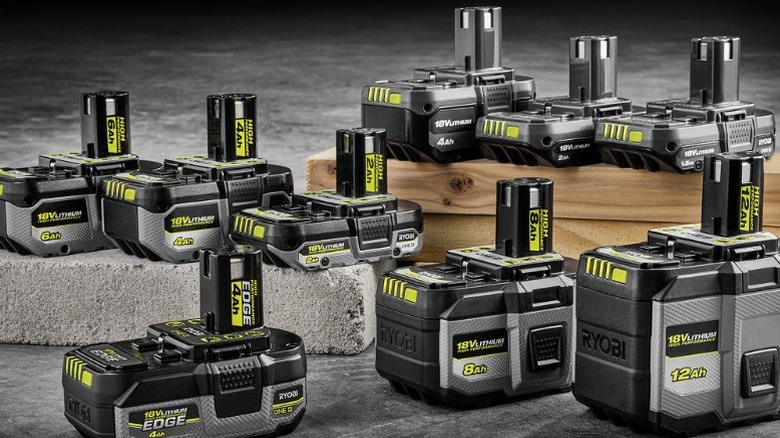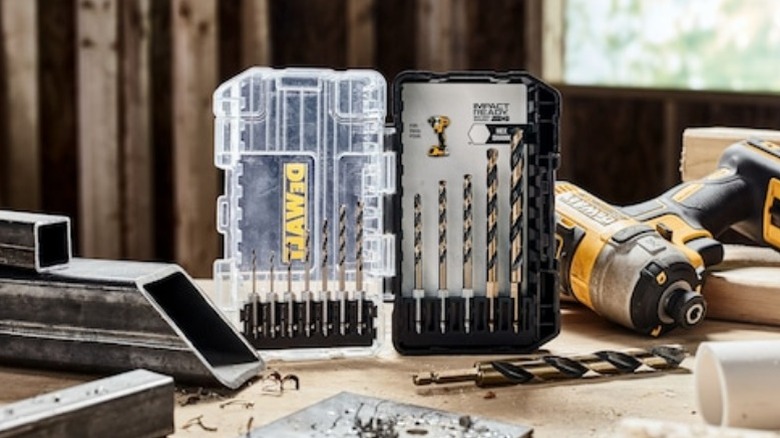What To Look For When Buying Used Woodworking Tools (And Where To Get Them)
Woodworking can be an expensive hobby. The cost of lumber is already bad enough, but the price tags on new tools can be downright harrowing. This is why many new and veteran carpenters are always on the lookout for a good bargain, and one of the best ways to get quality tools at a good price is to buy used. If you have a little patience and an eye for quality, buying used can get you great gear for even less than what you would have to spend on the budget brands. Carpentry tools and equipment aren't usually all that fragile. They're built with durability in mind, so they can last a really long time if they're properly cared for and maintained.
I've been a carpenter for the better part of a decade, and several of the tools populating my work shed have been purchased second-hand. Not only is this a great way to get tools on the cheap, but it also gives a second life to perfectly serviceable equipment that might otherwise be thrown away. There are certain risks with buying used tools, though, and I've found that there are a few things in particular that you'll want to keep an eye out for any time you find yourself looking to buy previously owned equipment. You'll want to be able to identify the quality and condition of the tools, as well as learn about some of the best places to get them.
Look for trustworthy brands
One of the first things that you'll probably notice when looking at any tool is the manufacturer's brand. Not only is the brand name usually stamped on the side of the tool in bold font somewhere, but most of them also color-code their power equipment so that you can spot their products at a single glance.
DeWalt, Makita, Milwaukee, Craftsman, Bosch, and Ryobi are all frequently ranked among the best major power tool brands, and each offers a wide range of consumer and professional-grade woodworking tools. These are the types of products that you're most likely to come across, and most of them have a passing-decent reputation for quality. There are also several brands that have a specific focus on producing woodworking equipment that you might want to keep an eye out for. Kreg, for instance, makes track saws and a lot of products geared toward pocket hole joinery, while Dremel is best known for its detail-oriented, handheld rotary tools. Finally, you have the really high-end brands. Festool, Hammer, SawStop, Mafell, Powermatic, and Mirka are all industrial-grade manufacturers. Many of the tools in their respective lineups are priced in the four-figure range, so it's rare for them to pop up in a thrift shop. Even so, they're always worth keeping an eye out for.
If you find a tool that you want, but don't recognize the brand, it might be worth taking the time to look it up and make sure that it comes from a reputable manufacturer. Of course, the brand alone isn't a guarantee of quality, but it can be a good indicator.
Test electronics and battery compatibility
It's usually pretty easy to tell if a hand tool is in good shape just by giving it a thorough examination, but power tools can be a little bit trickier. There are a lot of internal components at play that might not be visible from the outside. One of the best ways to tell if a corded power tool functions as designed is to simply plug it in and turn it on. If you are at a yard sale or purchasing a tool from an individual seller, then it's never a bad idea to ask if they mind letting you plug the tool in so you can try it out before you buy it. This isn't usually an option in second-hand stores in my experience, so you might want to ask if they test the tools they sell before placing them on the shelves and whether or not they offer a return policy.
Battery-powered tools add an extra layer to this. If the tool comes with a charged battery that allows you to turn it on and try it out, great! If not, you may be taking a chance that the battery or tool is dead. It's also never a bad idea to try to stick to as few battery systems as possible. If you already own several Ryobi 18V One+ tools, for instance, then purchasing more tools of the same brand and voltage will ensure that you can freely swap your batteries, even if the new one has trouble holding a charge.
Check blades and bits for wear and cracks
Checking the plastic casing, cord connections, and overall external condition of a tool is essential, but it's also always a good idea to keep an eye on the condition of any metal parts. A little rust on a hammer isn't the end of the world since a bit of WD-40 and some steel wool are usually enough to take off most surface corrosion. Even a chisel with a small chip in its edge can be re-sharpened if you have the skill and the patience for it, but you'll want to be careful when it comes to power saw blades and drill and router bits.
Most saws function by moving in one of four ways: circular rotation (circular saw, table saw, miter saw, etc), reciprocation (reciprocating saw, jig saw), single-direction rotation (band saw), or oscillation (oscillating multitool). But even though the type of movement might be different, they all have sharp blades that move very quickly, so it's important for you to be confident that they're sturdy and fully intact before you ever flip the On switch. Abundant rust and stress fractures in the blade can weaken its structural integrity and make it more likely to snap or break apart when it's in use, which can be very dangerous for the user. This also applies to the bits used by rotary tools like drills, drivers, and routers.
Make sure that you examine any used blades and bits thoroughly before using them. Check for rust and cracks first to make sure that it's structurally sound, then check any blades or ridges to make sure that they're sharp.
Make sure the tool comes with everything you need
Another thing you'll want to check when inspecting a used tool before buying it is that it comes with everything that was included in the original box. Some woodworking tools may come with proprietary parts that are difficult or expensive to replace. Many power tools may require a key for replacing blades or bits. Others might require more complex accessories. Table saws, for instance, often come with a custom-fit rip fence that can be difficult to replace with a third-party part since it's meant to clamp snugly to the table, and they come in a wide range of different sizes. It's worthwhile to look up the tool you're thinking about buying and take a look at what is supposed to come with it. Ask yourself if you need any missing parts and whether it would be easy and affordable to replace them if you do. I once bought an old router that was missing its collet chuck. I ended up needing to order one from the manufacturer and install it myself, which turned out to be a bit of a pain. It's better to avoid those kinds of situations if you can.
What's more, not all woodworking tools are single items. Some of them are sold as a kit, and you'll want to be sure when buying these collections that they are actually complete. Drill bits, router bits, chisels, gouges, joinery sets, and several other items are frequently sold this way. It's always the most frequently used drill bit in a set that's the first to break or get lost, so even a mostly complete set might be missing the exact component you need the most frequently.
Where to get used woodworking tools
Now that you know a bit more about what to look for, it's time to consider where you're going to look. One of my personal favorite places to find used tools is at the ReStore. This is a chain of second-hand goods retailers affiliated with the Habitat for Humanity program that specializes in tools, furniture, and home refurbishment supplies. You never know what you're going to find when you walk through their doors, but my local branch always seems to have a wide assortment of drills, saws, sanders, planers, shop vacs, hand tools, and other common pieces of woodworking equipment. Best of all, everything you find is going to be very affordable. Other thrift stores, such as Goodwill and Salvation Army, might be worth checking as well, though I've personally not had much luck finding anything other than basic hand tools and cheap drills.
Alternatively, you might want to look into buying directly from a previous owner. Garage sales can be hit or miss depending on the house, but I've had some luck at a couple of them. I've found that a lot of estate sales have a big assortment of tools that tend to be a little bit newer and in better shape. If you're looking for something specific, however, then you might have better luck with local digital markets run by platforms like Craigslist or Facebook Marketplace. Prices and quality can vary quite a bit depending on the area and the individual seller, but it might be your best bet if you're looking for a particular item, brand, or model.





